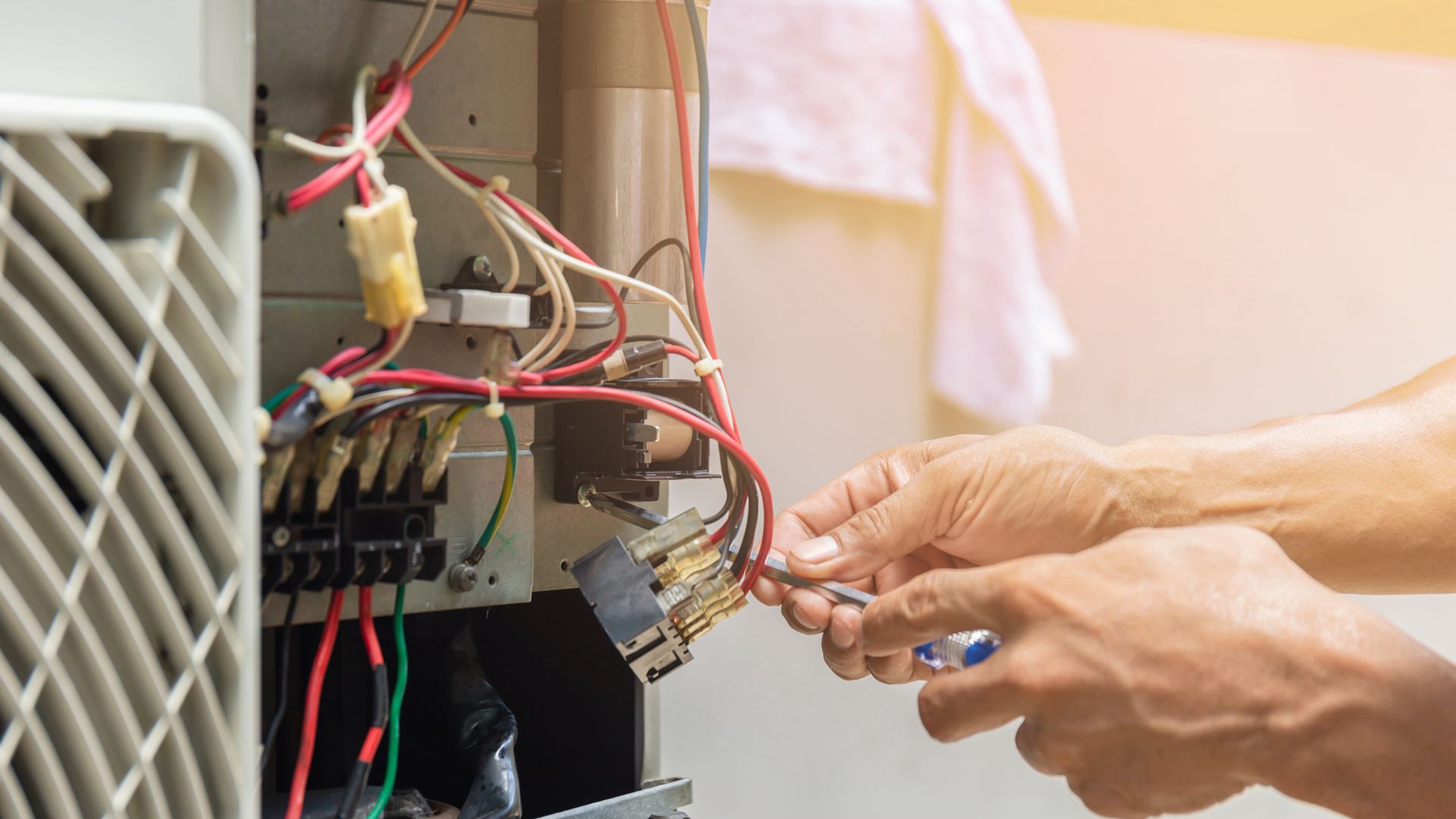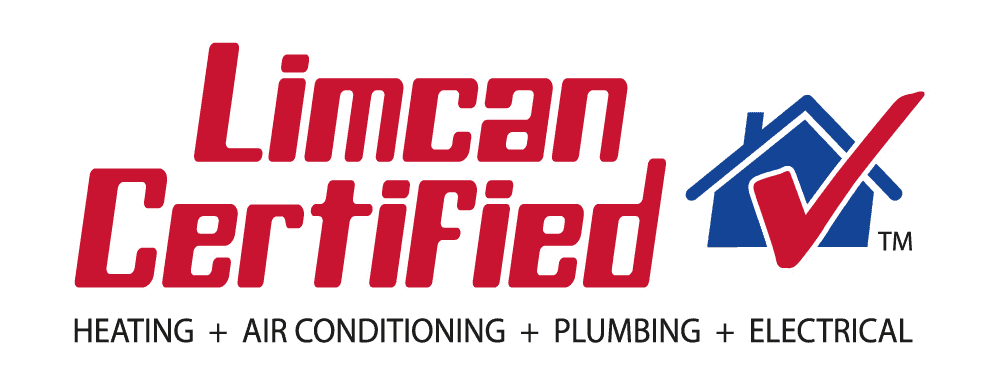Looking for the Best New Air Conditioning System for Your Home?
Limcan Certified is here to help with your search.
Our official Canadian Buyer’s Guide to Air Conditioners is designed to help homeowners in Whitby, Oshawa & the surrounding Durham region find the right system for your budget, and your house’s size, and to help your family stay cool all summer long.
With an investment this significant and so closely tied to your day-to-day comfort at home, it can be hard to know where to start.
That’s why our guide breaks down your search for the right AC system into bite-sized bits that are easy to work through, read through, and help you get the answer to:
What is the best air conditioning system for me and my family?
The Canadian Buyer’s Guide to Air Conditioners looks at factors such as different types of AC systems, how they work, how they impact price & performance, and the importance of factors such as finding the right size unit.
So if you need any of those or similar questions answered before you buy, take a look below.
We’re here to help you make the best, most informed decision you can for a new system and feel confident in your home comfort.
Different Types of Residential Air Conditioning Systems?
Let’s examine two types of home cooling systems that work well for Canadian summers: central AC systems, and ductless AC systems.
Which one’s right for you and how are they different?
What Is Central Air Conditioning?
A central air conditioning system is pretty simple to explain: outside your home sits an external condenser unit that rids your property of hot air.
This often looks like a metal box on a level base.
But inside your home, like an angel in the clouds, sits an evaporator coil above your furnace. Its job is to cool the air within your home.
Lastly, beautifully chilled air is blown through your home’s ductwork using a fan. This is done thanks to a partnership between your furnace or air handler and your AC.
Did you know that central aircon works in close contact with your home furnace to greatly improve your home air quality?
This is because the air travels through the furnace filter and any air purification equipment that you have in place.
How Does Central Air Conditioning Work?
For homes across Canada, a central air conditioner is a very simple and effective cooling system indeed. Specifically, it pulls out hot air from your home’s ductwork using your furnace or air handler fan.
It works like a vacuum cleaner, except it sucks out hot air!
Remember the evaporator coil that was mentioned earlier which sits above your furnace “like an angel in the clouds?”
Heat is removed from the air as it’s blown across this coil, hence cooling it down.
But what happens to this heat, you might wonder? That’s easy: refrigerant running through this same coil absorbs this heat. One could say, it’s kind of like a “heat sponge”.
Then it’s pumped into the part of your air conditioner that sits outside, called the condenser.
As you might imagine, the condenser releases your house heat into the outside air, cooling the refrigerant. Here, one can envision a magician releasing a dove from a top hat.
And then the cycle starts all over again when the refrigerant is sent back inside your home. That’s how refreshingly cool air is made by your home's Central AC system!
How Does a Central AC Thermostat Work?
- When your home air gets warmer than your preset thermostat temperature, a signal
- is sent to your furnace’s circuit board that cold air is urgently needed!
- This causes the blower motor (in your home) and condenser (outside your home) to turn on.
- Next, your ductwork works diligently sucking in the warm air from your home. This air cools when it passes over the evaporator coil, which sits above your furnace “like an angel in the clouds”.
- This is when you start to feel relief: refreshingly cool air gets circulated through your home’s return air vents. Ahhh!
- Then, the refrigerant in your air conditioning unit absorbs the heat from the air, as it passes through the evaporator coil.
- Next, the hot refrigerant is pumped out to your condenser (the outside portion of your aircon unit).
- Finally, the condenser blows outdoor air across its set of coils. This removes the hot air from your home that was absorbed by the refrigerant, before returning the refrigerant to your home.
- …and so the cycle continues, until the preset thermostat temperature is achieved and you have a wonderfully cool home!
What Are the Benefits of a Central Air Conditioner?
As mentioned earlier, central air conditioning is definitely the most common way that Canadians cool their homes.
This is because of central AC’s many benefits, such as:
- Ability to cool all rooms in a house, not just specific rooms
- Greater cost-effectiveness than ductless air conditioners
- Ease of temperature control by a single thermostat (master temperature control) instead of many
- Ease of maintaining one unit instead of several ductless AC units
- Greater air quality, as air travels through the furnace filter and any air purification equipment that you have in place
- Longer life than ductless AC systems overall
Learn more about central air conditioners and their benefits.
What Is a Ductless Air Conditioner?
A ductless air conditioner is different from a central AC system in that it does not use ductwork to pump out cool air.
Ductless air conditioning works best for older homes or cottages lacking the ductwork needed to run a central AC unit.
Split ductless air conditioners are a ductless AC option in which multiple indoor units or “heads” cool the air. Split ductless AC can be positioned in many places such as on the floor, wall or ceiling.
How Do Ductless Air Conditioning Systems Work?
The ductless air conditioning unit or “head” cools the air only in the room where it is installed, not elsewhere.
In terms of split ductless AC, the different units allow homeowners to set different temperatures for each room and “head”.
For example, a unit installed in a hot attic will be set to cool more aggressively than a unit on a main floor.
Did you know that some homes with central AC systems can also have ductless AC in some hard-to-cool rooms?
Yes, it’s true. This can be the case with split-level homes, residences with third floors or multi-levels, or rooms with extreme sun exposure.
What Are the Mechanics of Ductless Air Conditioning?
Ductless air conditioners tend to be smaller and can be attached to the indoor wall, or ceiling or sit on the floor. A companion unit sits outdoors and can be mounted.
A small hole in the exterior wall connects the indoor to the outdoor unit via a conduit.
A power cable, refrigerant tubing, and condensate drain run between the indoor and outdoor units.
This is a pretty easy way to cool a home without ductwork, or difficult-to-cool rooms.
What Are the Benefits of a Ductless Air Conditioner?
- Ductless: No ductwork is required to cool your space.
- Space Saving: A ductless AC can fit in very compact areas.
- Cooling and Heating: Many ductless units can switch between cooling in the summer and heating in the winter. Can you say versatile?
- Adjustable Temperature: Regardless of the temperature in the rest of the house or other rooms, the ductless aircon unit can be set to its temperature. Split ductless AC “heads” can also be set to their temperatures.
- Great for Canada!: With our wacky Canadian weather that can be hot one day and cold the next, ductless air conditioners can switch from cooling to heating with a simple push of the button. There is no summer or winter switch to flip in the basement.
Learn more about ductless air conditioners and their benefits.
Factors to Consider When Choosing the Size or Output Capacity of an Air Conditioning System.
- Total square footage or size of your home
- Amount of bedrooms in your home
- Type of windows in your home, as well as window insulation
- Age of home and existing insulation in your walls and ceilings
- Sun exposure (i.e. does your home face south and get hot, or north and stay cool?)
- How energy-efficient an AC unit are you seeking?
Risks of an Oversized Air Conditioner.
A danger of having an oversized AC unit is that it will cool your home, but the humidity will remain trapped inside.
Although it is counterintuitive, the result is that your home will feel warmer and less comfortable.
Risks of an Undersized Air Conditioner.
A danger of having an undersized AC unit is that it won’t be able to cool properly on hotter days.
The result is intuitive: an overtaxed air conditioner that can’t keep the house cool enough on the hottest Canadian days.
Not only can this lead to an aircon breakdown, which means repairs. But an undersized air conditioning system won’t cool off your house enough and reach a comfortable temperature.
It's best to speak to a Home Comfort Advisor about finding the proper size for your new system.
Is It Time to Replace Your Air Conditioner? Look for These Signs.
- Your air conditioner is very old and was installed many moons ago.
- You see increases in your cooling bill, compared to previous months and years.
- You feel uneven temperature zones throughout your home when the AC is on.
- You hear strange noises when your AC unit is running, including sounds like the unit’s struggling.
- Your air conditioner strains to keep the house cool, and may or may not succeed.
- You have repaired your air conditioner several times already.
- Your aircon unit blows air that’s not cool at all.
- Your air conditioning system leaks water or an oily substance. Uh oh!
Air Conditioner Efficiency and SEER Ratings.
Seasonal Energy Efficiency Ratio, or SEER, is an important energy efficiency rating system for Canadian central air conditioners.
Simply put, SEER is the ratio of the cooling output and the energy used by the air conditioning unit.
When finding an air conditioner that’s right for you, seek out a unit with a higher SEER value.
This higher value means that the system is more energy efficient than units with a lower SEER value.
One easy way to find an AC unit with a higher SEER value is to seek out ENERGY STAR-certified air conditioning units.
Air conditioners with the ENERGY STAR certification have higher SEER and EER (Energy Efficiency) ratios.
Higher SEER and EER ratios are greatly desirable in Canada, as such an aircon unit will greatly reduce your energy consumption through swelteringly hot summer days.
Of course, other factors will influence the energy efficiency of your aircon system.
Proper installation of your air conditioning system will greatly affect how well your AC performs.
Want to learn more about the best way to save on a new AC? Contact us today.







